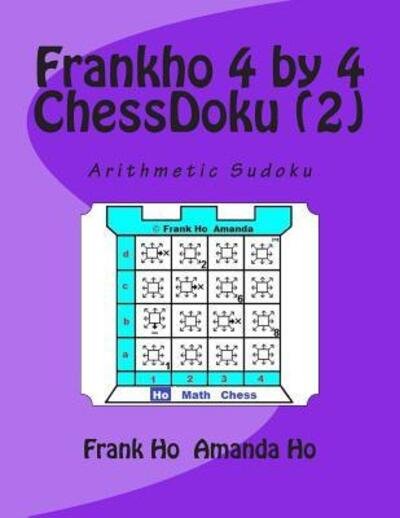
Tipsa dina vänner om produkten:
Math Contest Preparation, Problem Solving Strategies, Math IQ Puzzles Answers
Amanda Ho
Beställningsvara
 Julklappar kan bytas fram till 31:e januari
Julklappar kan bytas fram till 31:e januari

Math Contest Preparation, Problem Solving Strategies, Math IQ Puzzles Answers
Amanda Ho
We appreciate receiving your feedback. Please email your comments or suggestions to the author Frank Ho at fho1928@gmail.com. This workbook is aimed at math contests preparation for grades 1 and 2
There are not many math contests for grades 1 and 2. The main reason, I think, is the limited math computation ability of lower grades students. Many North American students will not learn multiplication until grade 3. Still, many Asian countries and areas learn times tables in grade 2, so there is one year of the difference of learning ahead in China. This workbook has brought its standard to meet the highest possible math curriculum in the world, so four operations of computation appear in this workbook. The earlier the students could master the skills of four basic operations, the more the students could explore many possibilities of word problem computation problems. With this in mind, how does the very popular Math Kangaroo Contest test the grade 1 and grade 2 students? How is it different from other math contests?
Math Kangaroo contest
The Math Kangaroo grades 1 and 2 Contest almost does not include the direct math computation problems, which are very different from the math contests in China where direct computation problems could include skilful computation problems. I analyzed the most recent years of Canadian Math Kangaroo Contest grade 1 and 2 problems, and they start to emerge some characteristics and categories, so I include here to help students prepare for it. The lower grade math contest tends to skew to the more visual operation type of problems. The problems could be classified as follows. Many of the following problems are not typical problems that appeared in the books where you can buy from a bookstore because the problems in the math contests are much more complicated and involve many creativities.
-Number relationships - mixed computation-Placing numbers in empty spaces-Logic problems-Geometry - Missing part of a figure or dividing a figure, Symmetry-Rotation-Counting figures and angles-Arrangement and combination-Pattern-Substitution method-Number puzzles including filling numbers into empty spaces
In 2015, I started to pay attention to Chinese after-school learning centre's teaching materials. I started to compare their teaching materials with our North American materials. At the same time, I researched the materials from Singapore, Taiwan, and puzzles from Japan and Britain. These analytical researches have led me to have an idea to combine all my published workbooks into one large workbook which includes math contest problems, IQ fitness, word problems, and chess and math integrated worksheets.
This workbook is unique and one-of-a-kind. It also represents my idea of showcasing why math is fun to children and my ideas of using inquiry and conceptual teaching (★★★★★★??), then reinforced by procedural practices (?????). I have used many of these worksheets on my students in my classes and witnessed their feedback. Most children do not want to do just computation problems for 2 hours; very few students like to work on math contest problems for 2 hours continuously, so puzzles and chess problems are fun for them for a change.
| Media | Böcker Pocketbok (Bok med mjukt omslag och limmad rygg) |
| Releasedatum | 10 juli 2019 |
| ISBN13 | 9781988300580 |
| Utgivare | Ho Math Chess |
| Antal sidor | 586 |
| Mått | 203 × 254 × 30 mm · 1,15 kg |
| Språk | Engelska |

































